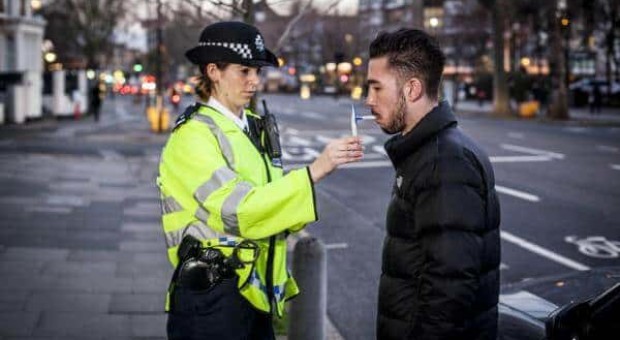
Drug Driving Law Comes into Force
New laws which prohibit motorists from driving when under the influence of certain drugs have come into force in England and Wales to the delight of campaign groups.
Existing regulations already mean drivers who are impaired by any drug are guilty of an offence, the punishment for which is a maximum fine of £5000, imprisonment of up to six months and a driving ban of at least one year. These penalties remain unchanged under the new legislation.
However, the new laws aim to achieve a zero tolerance approach to motorists who drive while under the influence of drugs. Legal limits for 16 different drugs have been established; eight of which are prescription only medications and the other eight illegal substances.
Police officers will be equipped with so-called ‘drugalysers’ in order to test motorists at the roadside for the presence of some illegal drugs. This is in much the same way that breathalysers are routinely used to assess drivers suspected of being under the influence of alcohol.
Drug-driving laws
The offence of driving while being under the influence of drugs was originally presented by the Government in 2012, but police were required to prove that the driving of a motorist who had taken a substance – either illegal or prescription – had been impaired. This new legislation aims to tighten up on previous regulations by improving the clarity of the judgement as to whether a motorist has been driving under the influence of drugs, while also helping to support drivers who legitimately rely on certain prescription-only medications who otherwise might fall foul of the law.
The new regulations also aim to reduce wasted time taking suspects to police stations to undergo blood tests, which some drivers refuse on the basis of alleged medical or religious grounds in order to allow drugs they had taken to leave their system.
Testing for illegal drugs
Under the new law, police will be able to carry out roadside tests to assess whether a driver has taken cannabis or cocaine using the handheld ‘drugalyser’. Even if a motorist passes this test, they can still be arrested and taken to a police station for further tests. Six further substances, including LSD, ketamines, ecstacy and heroin are also covered by the regulations although testing for these must be carried out at a police station rather than at the roadside.
For the eight illicit substances specified in the legislation, low minimum acceptable amounts have been set while higher levels have been agreed for certain prescription medications.
Prescribed medications
The prescribed medications included in the legislation, with their relevant upper limits, are:
• Amphetamine 250µg/L
• Clonazepam 50µg/L
• Diazepam 550µg/L
• Flunitrazepam 300µg/L
• Lorazepam 100µg/L
• Methadone 500µg/L
• Morphine 80µg/L
• Oxazepam 300µg/L
• Temazepam 1,000µg/L
Motorists who are taking one of the eight named prescription drugs will not be punished if found to be within the acceptable parameters (determined according to the level of risk during driving for each individual drug). Drivers are advised to continue to take their medication according to the instructions given by their doctor or other health professional and not to exceed the prescribed quantity or amount.
The new law aims to ensure that these motorists have a right of defence if taking their prescribed medication as instructed, although this will not be a valid argument if driving is impaired as a result.
Motorists are advised to carry evidence of their prescription with them, such as the printed label issued by the pharmacy, in case they are stopped by the police while driving.
Road safety campaigners
In a survey carried out by road safety campaigners Think!, the complacency of drivers who admitted to taking illegal drugs was revealed, with 55 per cent claiming that they felt safe to drive. Even more worryingly, 60 per cent admitted to driving in the past despite not knowing if they were still under the influence of illicit substances.
A driver’s ability to reason and make quick judgements has been proven to be seriously impaired after taking drugs, with a marked decrease in reaction times and an increase in a sense of self-confidence leading to unsafe risk-taking. A list of more detailed information about the varying effects and dangers of different types of drugs can be found here.
Some figures estimate that at least 200 deaths on the road in the UK each year are the result of driving while under the influence of drugs.
Professor David Taylor of the Department of Transport’s advisory panel of drug driving said that the changes to the law would make prosecution easier as well as deterring would-be offenders. He said that, while for prescription drug users the situation has not changed since the introduction of drug driving laws in 2012, it is their responsibility to ensure that they are driving safely and without impairment.




















